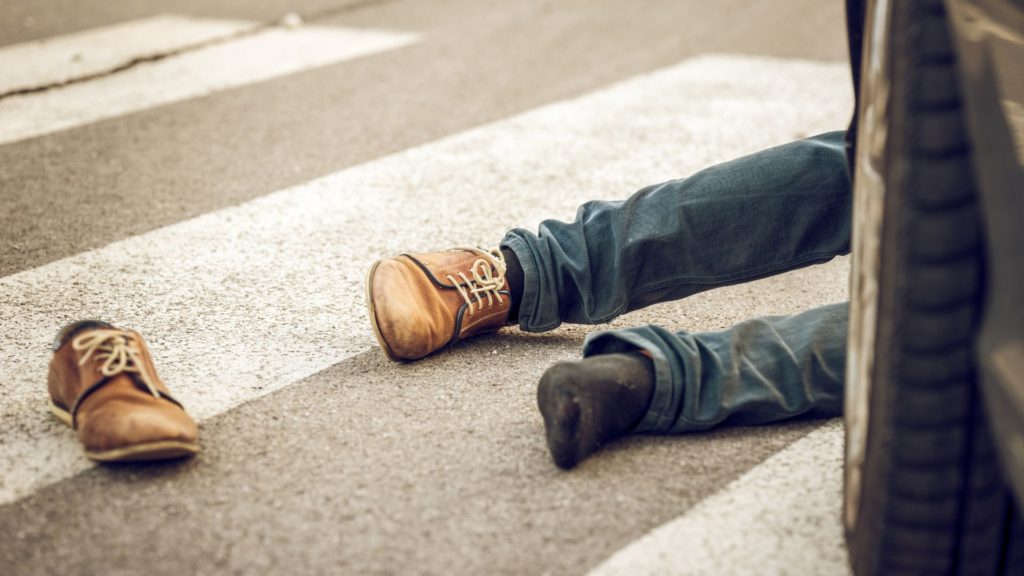
Being in a traffic accident is extremely stressful, especially when it involves a pedestrian. When these types of accidents occur, people often assume the driver was to blame. However, pedestrians can also be partially or entirely at fault for an accident.
You may wonder, What happens if a pedestrian caused an accident? Additionally, you may also be asking yourself, If a pedestrian caused an accident, who pays?
If you were in an accident involving a pedestrian, the attorneys at Gerling Law can help you understand your legal rights and options.
How Do I Show Liability?
One of the first steps to determine who pays in an accident caused by a pedestrian is proving liability. Keep in mind that the pedestrian could be partially or entirely at fault. Depending on their share of the fault and where the accident occurred, the pedestrian may be able to recover some compensation for their damages or may not be able to recover any compensation.
To show the pedestrian is liable, you will need to collect evidence. Immediately after an accident, you should record the names and contact information of everyone involved and of any witnesses. Witness statements can help your attorney establish liability later on.
It’s also a good idea to take photos or videos of the accident scene. You should take pictures of any damage to your vehicle, any injuries you suffered, and pictures of the accident scene, including skid marks, broken glass, damaged signs, potholes, and any other evidence. If the police respond to the scene, they will file a report that will provide your attorney with information about the accident. Be sure to get the name and badge number of the officer who is drafting the accident report or ask for the officer’s card.
How Is Fault Proven in a Pedestrian Accident?
For you to recover damages, your attorney must show that the pedestrian was at fault. Usually, this requires you to show the pedestrian was negligent. There are four elements you must establish to show that someone was negligent. These are the duty of care, breach of duty, causation, and damages.
Duty of Care
First, your lawyer will need to demonstrate the pedestrian owed you, as the driver, a duty of care. A duty of care means a pedestrian must act like a reasonable, prudent pedestrian would act in the same circumstances. For example, if a pedestrian is crossing the road outside of a crosswalk, they have a duty to cross with reasonable care and check for oncoming traffic.
Breach of Duty
The second element of negligence is a breach of the duty of care. A breach of duty occurs when someone does not act how a reasonable, prudent person would act in the same circumstances.
Some examples of a pedestrian breaching their duty of care include the following:
- Ignoring traffic signals,
- Walking across the street while intoxicated,
- Suddenly jumping into the street, and
- Not crossing the road at a crosswalk.
There are plenty of other ways a pedestrian may have breached their duty of care. An experienced attorney can investigate your accident to identify potential breaches of duty.
Causation
Causation requires you to prove the pedestrian’s breach of duty caused your damages. Typically, causation is proven by applying a legal test known as the “but for” test. When you apply this test, you prove causation by showing that, but for the pedestrian’s breach of duty, you would not have suffered damages. For example, you would want to show that if the pedestrian had not darted into the road, you would not have crashed and suffered broken ribs.
Damages
Lastly, you will need to prove that you have compensable losses. You must have damages you can be compensated for to succeed in a negligence claim. Some examples of damages would be medical expenses, wages you lost because your injury prevented you from working, and pain and suffering caused by your injury.
To successfully show the pedestrian was negligent, you must establish all four of these elements.
How Does Fault Affect Compensation?
It is possible that the pedestrian is at fault and caused the accident, but the driver shares some liability. Or, the pedestrian might be entirely responsible for the accident. If a pedestrian was at fault, they would likely have to pay compensation to the injured driver or any other party injured in the accident. Either way, state law will determine if someone who is partially at fault can recover compensation.
Indiana
Indiana uses the modified comparative negligence theory to determine if a person can recover compensation. In Indiana, if someone was more than 50% at fault for an accident, then they can’t recover any compensation. But, if they were partially responsible but less than 51% at fault, they can recover compensation. However, their compensation will be proportionally reduced by their percentage of fault.
Kentucky
In Kentucky, the pure comparative negligence rule applies. This rule means that a party can recover some compensation as long as they were not 100% at fault for the accident. So if the pedestrian is 80% at fault and the driver is 20% at fault, the driver can still receive up to 80% of their damages.
Third Parties
A third party might also be partially responsible for an accident, even if a pedestrian is mostly at fault. For example, a vehicle manufacturer might be liable for a defect in your car that contributed to the accident. Or, a city agency that takes care of the road may also share some responsibility if it negligently failed to repair a pothole that contributed to your accident. The attorneys at Gerling Law can help you identify all of the parties who might be responsible for your damages.
What Types of Damages Are Available?
After a collision involving a vehicle and a pedestrian, damages could be available to one or both parties. There are two primary categories of damages available when you bring a civil claim: economic damages and noneconomic damages. The types of losses in each category can differ depending on the state where you file your claim.
In Indiana, some of the losses you can recover compensation for include the following:
- Medical expenses,
- Lost wages,
- Property damage,
- Pain and suffering,
- Loss of consortium, and
- Emotional distress.
Similarly, in Kentucky, you can recover compensation for economic and noneconomic damages for an accident involving a pedestrian, including the following:
- Lost wages,
- Lost earning capacity,
- Medical bills,
- Pain and suffering,
- Inconvenience, and
- Physical impairment.
Be sure to save your medical bills, repair invoices, pay stubs, and any other documentation that shows how much money your injury has cost you. If you suffered a physical injury, it’s a good idea to keep a pain log or journal to document your symptoms and how your injury has negatively affected your day-to-day life. Financial documents, medical records, and pain logs can all help your attorney identify, calculate, and prove your economic and noneconomic damages.
How We Can Help You
At Gerling Law, we have decades of experience helping people get the compensation they need to help them move forward after an injury. Our award-winning attorneys have 125 years of combined experience and have recovered over $500 million for our clients in Indiana, Kentucky, and Illinois. The Gerling Law team is dedicated to helping every client pursue justice. Contact us today to schedule a free consultation to learn more about how we can help you.

